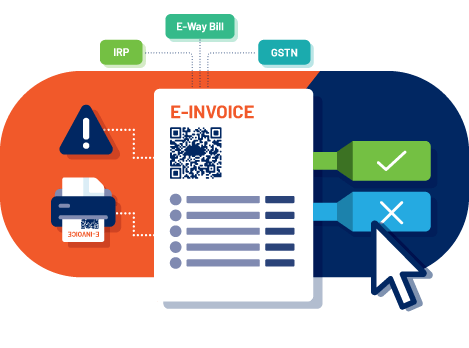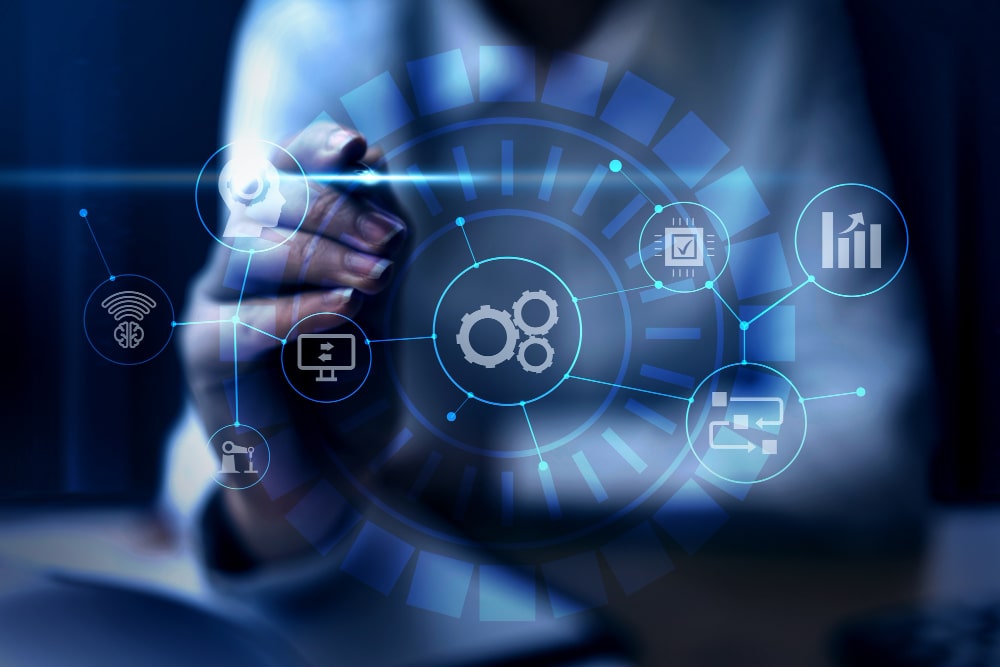GSTIN, Eway bill, and E-invoicing in an ERP
From January 2021, businesses with more than 100 crores must use electronic invoicing. It is a highly successful way to promote standardization, portability, and ease of compliance. ERP software will show to be a good resource for implementing e-Invoicing in your business smoothly, efficiently, and accurately.
E-Way bill, E-Invoicing, and GST are just a few of the keywords you’ll encounter when gathering information on taxes and the transportation of products. Unfortunately, however, many individuals are unfamiliar with these keywords, and whenever they are searched, the results include legal and technical jargon that is incomprehensible. Therefore, each term will be defined in detail in this article for non-technical readers to grasp the content and the ideas of the e-Way bill, E-Invoicing, and GST.
e-Way Billing: What Is It?
A bill that is sent electronically is referred to as an e-Way bill. It is a document generated electronically to transport goods by motor vehicle from one location to another. The origin and destination of goods might be interstate or intrastate, depending on the nature of the items and the transporter and recipient. The transportation of products and commodities worth more than INR 50,000 s should generate an e-Way bill. When an e-Way bill is created, the system assigns a unique number called the EBN, or e-Way Bill Number, accessible to the provider, recipient, and carrier.
Who is required to use an e-Way Bill?
GST registered individuals and GST unregistered individuals are obliged to submit an e-Way bill.
For GST-registered individuals:
When a GST registered person facilitates the transportation of goods/commodities through road, railroads, air, or sea, and the shipment exceeds INR 50,000, the GST registered individual or recipient is required to generate an e-Way bill on the common site.
When a GST registered person transfers goods/commodities for road transportation and the GST individual does not generate an e-Way bill on the gateway, the transporter is required to generate an e-Way bill on the platform using the information provided by the registered person.
For GST-unregistered individuals:
When an unregistered individual transports or transfers the transportation of products valued at or exceeding INR 50,000, the unregistered individual or transporter is required to generate an e-Way Bill on the common site.
When an unregistered person transports products to an unregistered person, who knows the GST registered person, the transportation is considered GST registered. The registered person or carrier must generate an e-Way bill in such cases.
Suppose various products are transported in the same shipment. In that case, the transporter is required to generate a single e-Way bill via a common portal that includes the product code of each separately produced e-Way bill per shipment.
e-Invoicing
Electronic invoices are required under GST (Goods and Services Tax). E-invoicing is required for companies with annual revenue over INR 100 crore. Previously, the ceiling was 500 crore, but it was reduced to 100 crores beginning January 1, 2021. This is done using the GSTN (Goods and Service Tax Number). Also, the Invoice Registration Portal (IRP) assigns each invoice an Invoice Reference Number (IRN). Therefore, all B2B companies must use e-invoicing.
Why do we need e-Invoices?
It used to be a huge concern for the government when people created fraudulent invoices to avoid paying taxes. e-Invoicing was intended to end these practices by requiring e-Invoices from government portals.
Benefits of e-Invoicing:
- Only one GST filing is required.
- Eradication of invoice mismatches during remit
- Multi-software interoperability issues plagued standard invoices.
- It may track invoices live.
GST invoice creation
Invoices can be generated using appropriate accounting or invoicing software that adheres to the e-Invoicing format. For example, a supplier can produce unique invoice numbers using a conventional hash-generation process. The Invoice Registration Portal will verify the invoice registration number and validate the file against the GST central register to eliminate any duplication. It will add a QR code to the JSON file after successful verification. It would also share the data with E-way bills and GST systems.
GST (Goods and Service Tax)
Goods and Services Tax Other taxes have been eliminated due to the GST. GST replaces excise duty, VAT, and service tax. Goods and services are subject to GST. Previously, VAT was required at every level of the procurement process, but GST eliminates this requirement.
GST ERP
GST implementation has impacted business software in a variety of ways. Businesses encountered significant difficulties transitioning from previous tax systems to GST systems. Many businesses that successfully transitioned to the GST system were light years ahead of those that struggled with the new system’s implementation. GST ERP software automates calculating the GST charged on products and services. This saves businesses significant time by automating creating accurate and effective invoices.
GST calculation is not a straightforward operation in ERP software. You must update account charts, master data information, tax rule engine, reporting, and workflow. This includes the data migration operations that affect both master and transaction data. LighthouseOne Business ERP for GST is an all-in-one solution for resolving the GST calculation issue. GST includes a module that calculates and applies GST automatically following applicable regulations. This allows businesses to stay ahead of the competition and avoid billing and invoicing errors.
Conclusion
The government has made e-way bills, e-invoicing, and GST necessary in today’s commercial sector. Thus, to maintain a competitive edge in business, it is necessary to implement an ERP system capable of meeting all of the needs of existing business contexts and demands.







